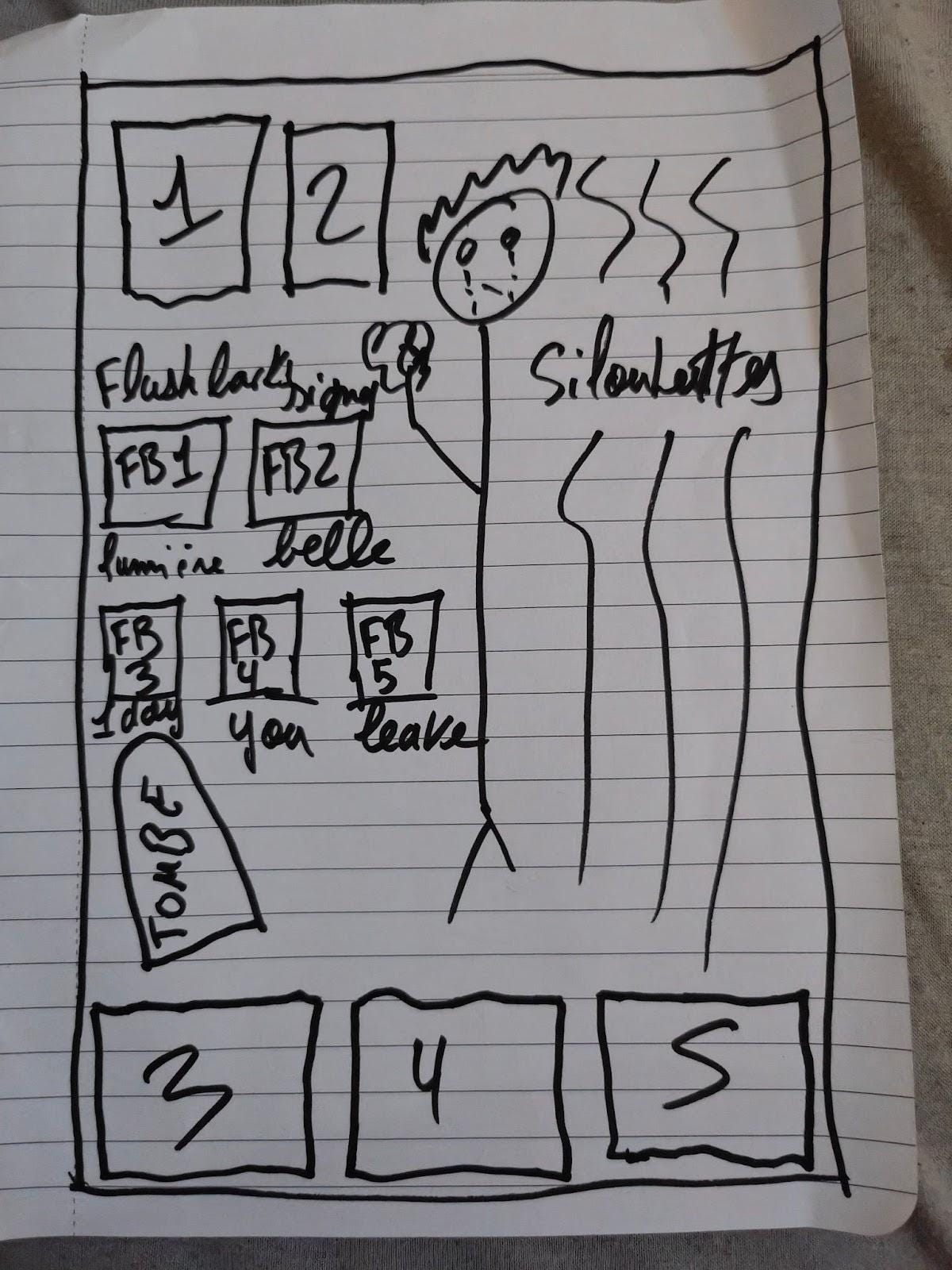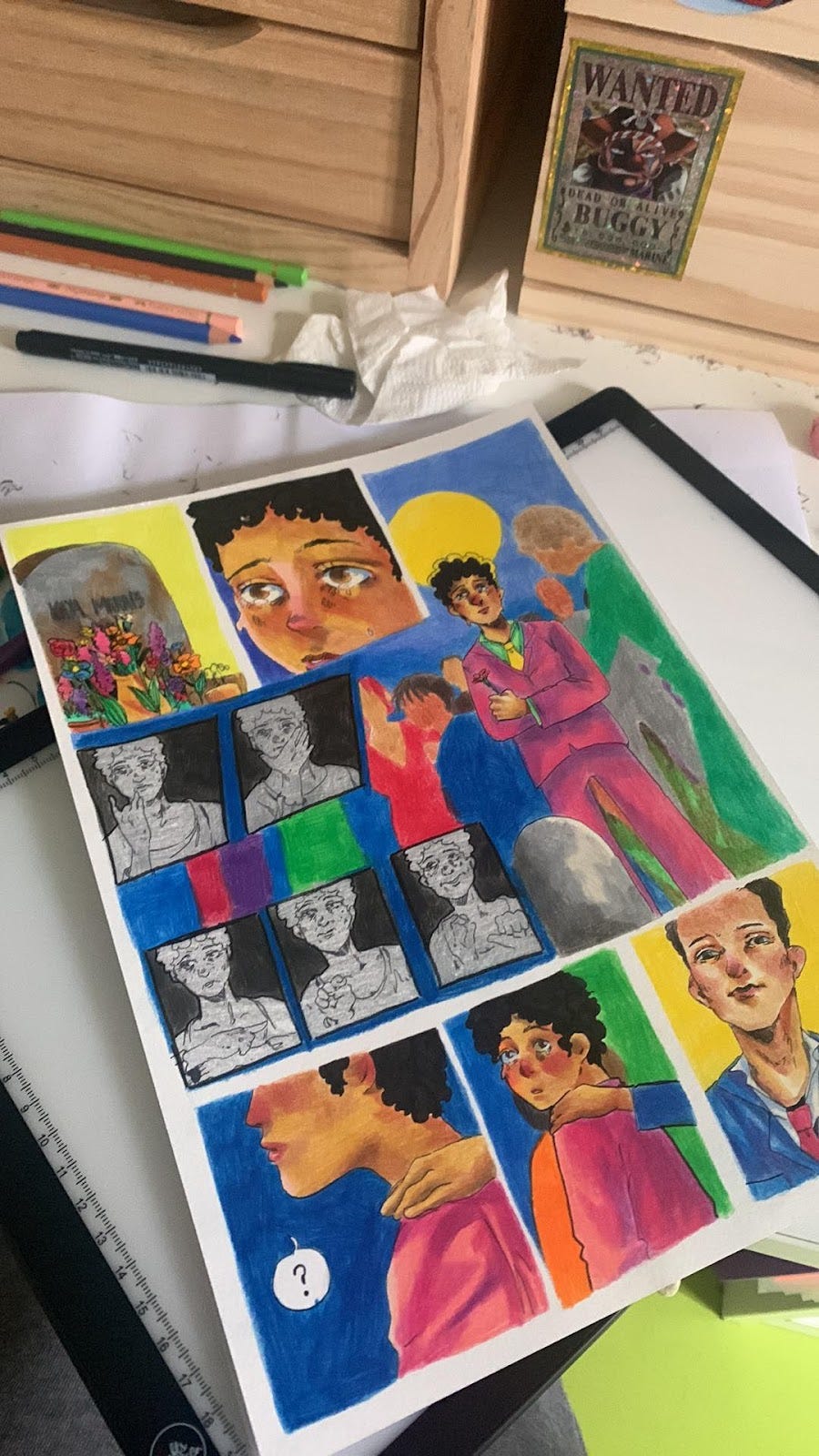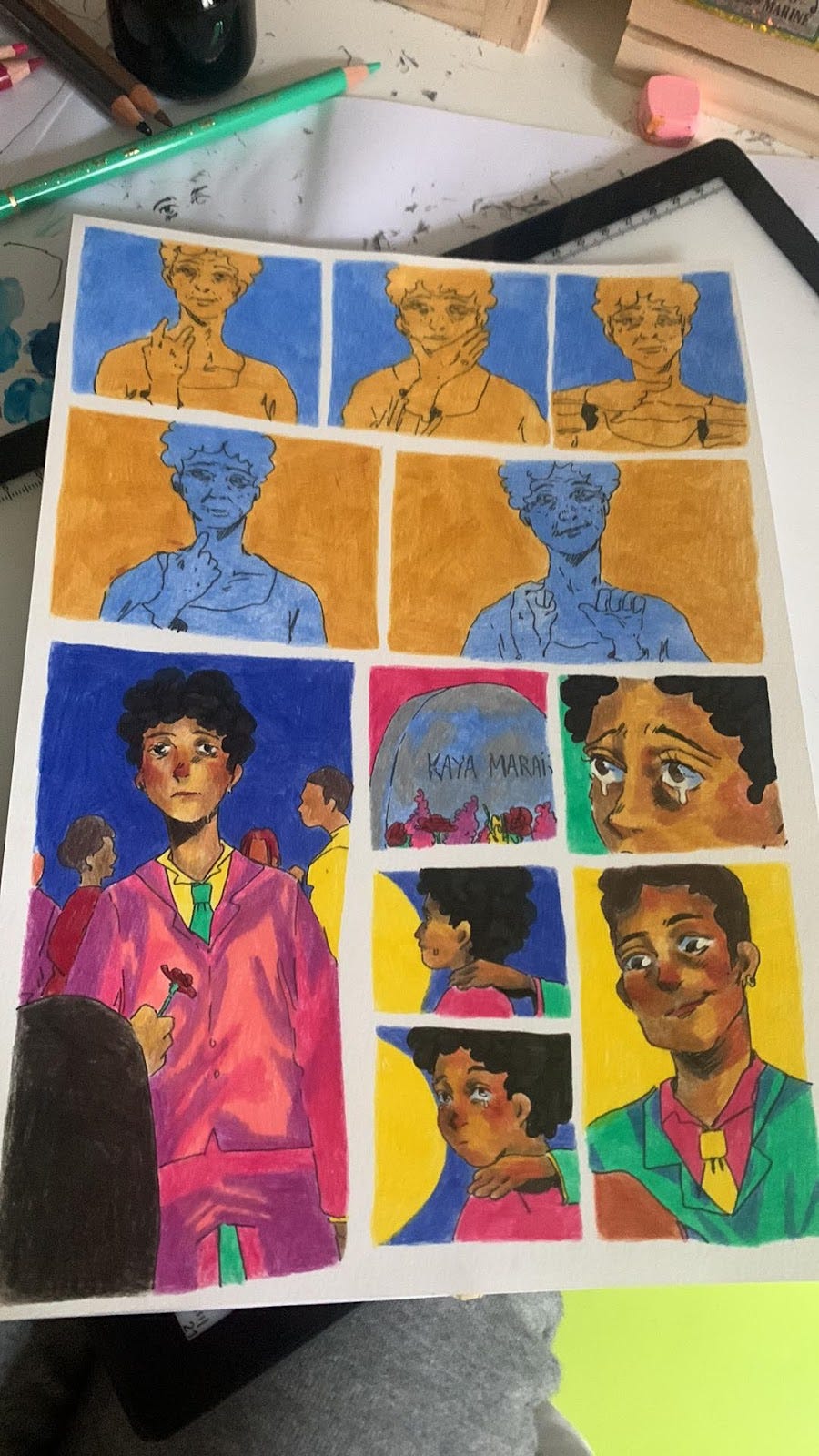So, I had three months to publish my first comic and build a company (if you missed the part about how it started, it’s right here). All I had was an artist willing to work with me, a printer and a shitload of things to do. If I had to define this wild trimester with two words, it would be learning and adapting.
Let’s start with the adapting part of this merry shitshow.
Working with an artist for the first time
As much as Mercening is a talented artist, she is not used to working with a writer. She draws A LOT and she tends to write everything she gives life to with her pencils. At the beginning of this collaboration I already had some experience with writing scripts for artists and I had read a ton of scripts written by my favorite comics writers. I know many ways to convey what I want to see on the page to the person responsible for the visual part of things. But pinpointing the right balance between freedom and instructions to give to your partner when first working together can take some time. As I had a lot to handle beside writing the script for this first comic, I gave Mercening the scripts on a page by page basis.
The script just for the first page of Luke Marais: a Who Wants To Be God Story (available soon on our website folks!) was four pages long and contained some scribbles of how I pictured the panels should be laid out on the page. She wasn’t that much excited by this way of working. Which I understood when I got the first page and saw that she ignored some of my instructions. Which I was fine with. The page was gorgeous and didn’t need everything I wrote to convey the feeling I was looking for. Truly talented artist this Mercening.
Pages 2-3 are actually a spread page and I gave her lots of freedom to display some everyday life scenes, so the process for this one was pretty smooth. Then came page 4. And, oh boy, did we hit a wall with this one.
This time around, the script was 3 pages long and included the proof I’ll never be able to draw my own stories:
This work of art was supposed to show Mercening what I was picturing in my tortured mind page 4 should look like. Suffice to say she wasn’t thrilled by this convoluted layout. Still, she tried to make it work. And to no one’s surprise, it didn’t. She despised what she had drawn and started to freak out about the two of us not being able to work together.
Feeling that the end of our collaboration might not be out of the question, I called her. Thing is, as we didn’t know each other, I figured that being the most descriptive possible about what I was expecting was the best way to go. No room for interpretation and less work on the artist’s end. Which is what some artists expect from their writers. But during this call I learned that for some artists, like Mercening, the less the better.
She likes being able to come up with her own layouts, to appropriate herself the page. So she told me what she thought was best for this page and I agreed she would try it out. And it worked. Well, she liked this second version when she despised the first one, but honestly, I liked them both. What mattered to me was that the art conveyed the feeling I was looking for and that the artist was happy. Both being checked, I changed the way I wrote my scripts.
No more panel by panel layout. I just wrote down what the narrator was going to say, what the context was and some elements I absolutely wanted to see appear on the page. From there, she was free to display it inside as many panels as she wanted and position them the way she liked. And then, I went even further. I started describing what I wanted to happen during the following 5 pages and let the magic happen. For pages 10-15 I only gave her a two pages document describing where the characters were at the beginning of this section, where they should end up by the end and what should happen in between.
From 4 pages to describe only one page of comic to 2 pages describing five of them. Less work on my part (at least during this part of the process, as I didn’t exactly know what the pages would look like, I had to improvise the narration part during the lettering) and the feeling of being part of the creative process on hers. Win-win-win.
Two months after the start of this collaboration, all the pages of this first comic were in. But I still had to learn how to format files for the printer, find a cover artist and letter said comic in French AND in English. All within three weeks. The clock was ticking and I was starting to feel like I had bitten more than I could chew. But I had to keep walking, and my next stop was New-York.
To be continued in the next episode of this newsletter. But before I shut my laptop down and crack a cold one, I’ll let you with the two versions of page 4: the one Mercening despised, and the one we ended up publishing in our first comic.
Sometimes, it’s in the details.




